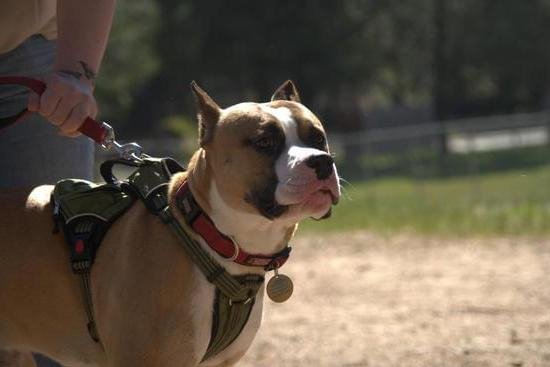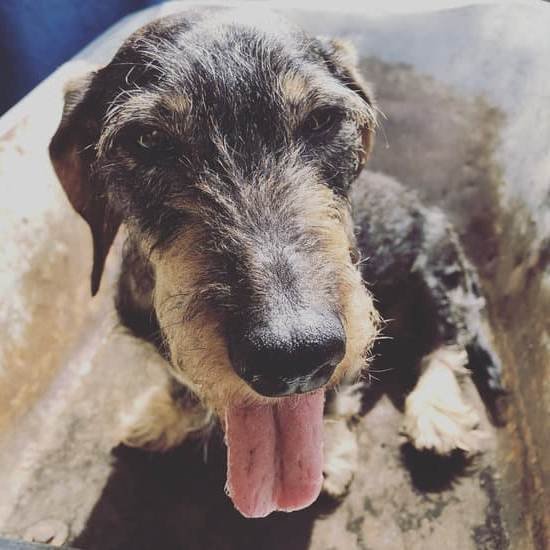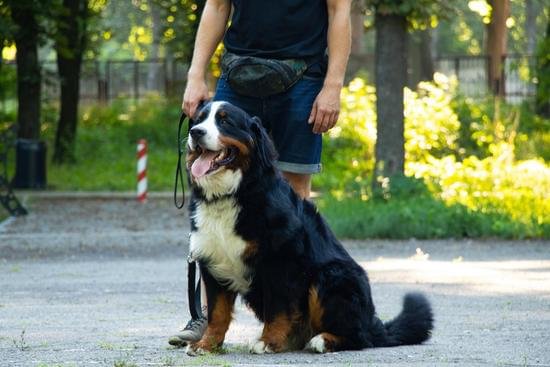Introduction
Crate training a dog can be beneficial to both pet owners and their dogs. It provides a safe, secure area for your pup when they need some peace and privacy. Crate training also helps them build independence, better manage anxiety, and can help with potty training. Additionally, it gives the owner a place where they can be sure their dog will be safe while they’re away from home or while they sleep at night.
The approach you take to training your dog will depend on the individual pet and their particular needs. Some dogs may learn best by having positive reinforcement every time they go into the crate without any commands or assistance; others may do better with commands, verbal praise or treats each time as a reward for good behavior. Ultimately, consistency is key in any kind of reward-based dog training method.
Positive reinforcement is essential to successful crate training. Dogs should never be scolded for exhibiting desired behaviors such as going into the crate willingly or staying quiet in the crate if desired; instead, give them extra love and attention when they do well and make sure to reinforce that behavior through rewards such as treats and verbal praise as appropriate. When your pup shows signs of anxiety or distress in their crate, it’s important to step in and provide reassurance that you are nearby but not scold them for feeling scared or anxious; this will only serve to heighten their stress level and make them more reluctant to enter the crate again in the future.
Preparation
Crate Training – Introduce the crate to your dog by placing a delicious treat inside. Make sure that you keep the door shut and give your pup the opportunity to walk around and comfortable explore the crate without any pressure. If your puppy is hesitant, don’t worry! Place another treat in front of the entrance and allow him to proceed at his own pace until he’s as far as physically possible. Once he completes his exploration, it’s time for a reward-based training session!
Treats – Reward-based treats are an essential part of successful crating. Introduce verbal cues such as ‘in the crate’ and ‘good dog’ so your pup learns what behavior is expected from them when you want them to go in the crate. As soon as they enter it, provide them with one of their favorite rewards such as a chewable toy or big piece of jerky. Doing this will create positive reinforcement which will make your puppy learn quickly and remain excited about going into their cage!
Establishing Routine – Establishing a routine with Crate training is key since dogs are creatures of habit. once your dog has begun to show consistency in going into his crate at night, begin adding cues such as ‘time for bed!’ or similar triggers 15 minutes before it’s time for lights out. Then after eating, taking walks or playing all day help transition back home by saying “Let’s go home!” or something else along those lines. You can also use chants or whistle sounds as reminders that its time for sleep soon which if done consistently will teach your pup when roughly it is just about bedtime.
Process
First, start introducing your dog to the crate. Slowly introduce your dog to the crate by sitting next to it and offering treats and verbal praise. Ensure that the environment is relaxed, calm and comfortable for your dog; If they become distressed or fearful once inside – move away from the crate and pause training until another day. Secondly, create a positive association with the crate by laying down a blanket or towel for added comfort and allowing your dog free access to it. Place treats inside, allowing your dog to explore the space and build trust in their own time.
Thirdly, reward desired behaviors with treats whilst gradually increasing time spent in the crate. Initially you should have short duration sessions inside the crate – rewarding whenever they enter or stay initially without distress. Gradually increase this duration – starting of with 10 minutes each session, adding an additional 5 minutes each session until they can remain inside for 30 minutes without becoming distressed. Finally, ensure those 30 minute will be enough time for them to sleep through the night if you plan on using it as a nighttime sleeping den – but don’t force sleep at any point during this process; if you do it could have negative associations linked with the space when later on achieving full overnight sleeps in there .
Nighttime Training
1. Establish a Nighttime Routine: It’s key to provide your pup with a consistent nighttime routine. Start by setting up the crate with blankets, toys, and treats in or around it. Doing so allows your dog to become familiar with the crate environment over time.
2. Begin Crate Training: To begin crate training your pup, start by putting their favorite treats and toys inside the crate. When they enter the crate, praise them and give them more treats. This establishes a positive association with entering the crate and will help them learn to love spending time in it on their own.
3. Increase Independence: Gradually increase the length of time your pup spends in the crate as well as the number of hours either side of bedtime that you leave them alone in it until they are comfortable sleeping alone for up to 8 hours at night if required.
4. Don’t Reward Bad Behaviour: Never reward barking or crying from within the crate as this will only encourage more negative behaviour when trying to sleep at night, instead introduce rewarding silence or relaxation through activities such as providing puzzle feeders or gnawing bones.
5. End With Positive Reinforcement: Lastly, end all training sessions positively! Give your pup plenty of exercise during the day so they’re ready for bed come evening and finish each night off on a good note-free playtime for 5 minutes before tucking them into bed firmly but lovingly giving them kisses and cuddles if desired along with final words of reassurance that you’re there for them until morning comes round again
Troubleshooting
One of the most common issues that owners encounter while crate training dogs is barking. This usually happens when a dog is separated from its owner and left in a confined space. The first step to solving this issue is to identify why the dog is barking. It could be due to them feeling insecure or anxious, being bored, or just wanting attention. Once you figure out why your dog is barking in the crate, you can start addressing the problem.
If your dog seems anxious or insecure when separated from you, there are several strategies you can try: provide plenty of mental stimulation during supervised time outside the crate by playing interactive games like hide-and-seek, allow them to have a special toy or treat with them in their crate that they can use as comfort, try leaving on some music or white noise when they’re crated up and make sure their environment is comfortable and free of any potential stressors.
For dogs who tend to bark out of boredom while crated, it’s important to make sure they are getting enough exercise and playtime outside the crate throughout the day so they can stay mentally occupied even when inside their confinement. To further reduce boredom-related barking, consider providing your pet with an interactive puzzle toy like a treat ball that stimulates your pup’s senses even if left alone for a few hours at a time.
Finally, if dogs bark for attention while in their crates, it’s important to ignore these behavior and remain neutral when interacting with them after letting them out of cradle until they calm down. That way they understand that barking won’t instantly result in treats or attention from their owners. Instead of giving them what they want whenever this behavior occurs, redirect their focus back onto more appropriate activities such as training sessions for treats and reinforcing positive behaviors whenever possible.
Next Steps
1. Start by offering treats in the crate to encourage your dog to go inside.
2. Increase time spent in the crate with the dog rewarded for extended stays, up to 30 minutes at a time throughout the day.
3. Offer chew toys and further rewards while in the crate to keep your pup happy while confined there.
4. Move toward feeding your pup meals in their crate, so they can start associating eating with being enclosed inside, creating an even stronger positive association.
5. While still reinforcing positive behaviour, begin to extend crating periods closer together so that your dog is used to being crated — but not isolated — for longer periods of time throughout the day and eventually overnight too, if desired (the goal should be 6-8 hours).
6. Extend where you allow your dog to go around the house when out of the crate, rewarding them for good behaviour when exploring and playing — eventually being able to roam freely around the home when unsupervised without any problems or alterations to behaviour.
Conclusion
Crate training is an essential way to teach your dog how to sleep peacefully in their crate while you are away. To be successful, it is important to slowly ease your dog into the crate training process; start off with positive reinforcement like treats and petting. Put their bedding in the crate and make sure that the crate is comfortable and safe for them; a blanket or towel will give them a sense of comfort. You should also take care to introduce the crate as a part of your daily routine, such as playing near it, rewarding with treats when they enter it and keeping meal times near its location. Allow your dog access to the crate at other times during the day but otherwise keep the door shut tight until necessary. Additionally, provide plenty of exercise during your time together (walks, park visits) because tired dogs are more likely to sleep throughout the night once placed inside the crate. For busy owners looking for tips on how to successfully train their pet quickly and efficiently, consider signing up for puppy kindergarten classes so that proper behavior can be reinforced from young ages. These courses will offer useful industry advice and links to further resources related to specific canine issues like sleeping habits.

Welcome to the blog! I am a professional dog trainer and have been working with dogs for many years. In this blog, I will be discussing various topics related to dog training, including tips, tricks, and advice. I hope you find this information helpful and informative. Thanks for reading!





